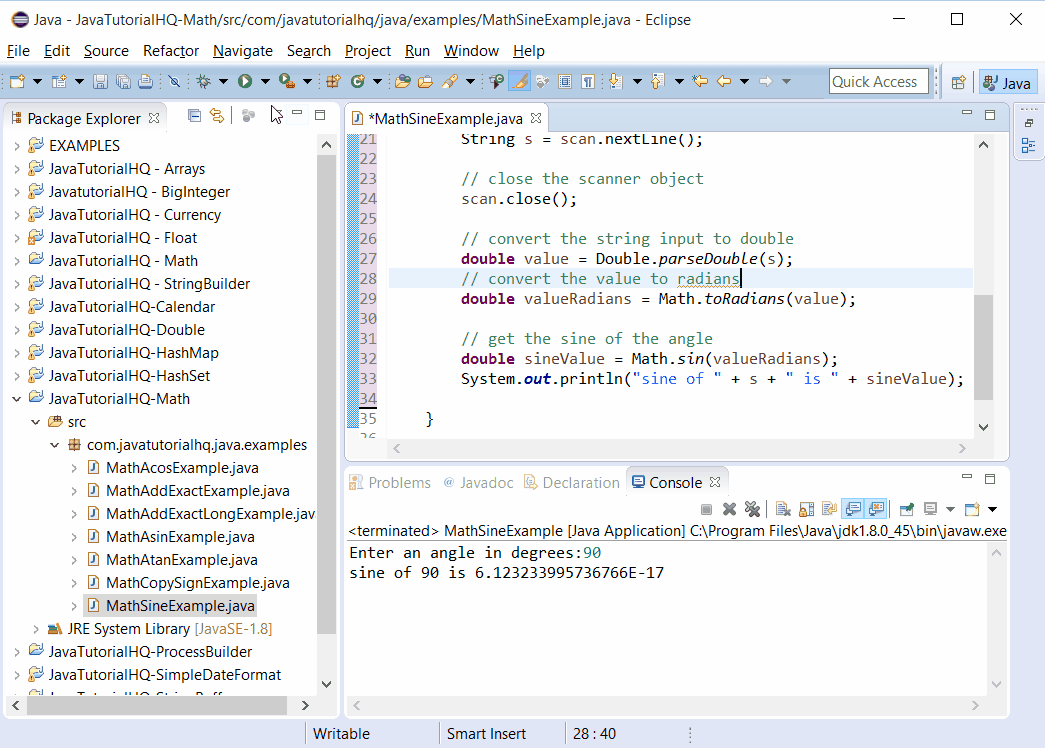

If we pass a positive parameter n to this method then it will return a random number in the range 0 to n(0 inclusive, n exclusive). The nextInt() method can be used to generate a random integer. The second random number is: 2199 Using nextInt() method of Random class Int result = (int)(randomNum * (max - min)) + min

Adding parameters to math.random java code#
The above code using the nextDouble() method is shown below. All these methods will generate a random decimal number between 0 and 1. We can also use the nextDouble() and nextFloat() methods of the Random class in place of the Math.random() method. Int r2 = randomNumberGenerator(2199, 2200) //random number between 21 Int r1 = randomNumberGenerator(5, 105) //random number between 5 and 105 Int randomNum = (int)(r * (max - min)) + min Public static int randomNumberGenerator(int min, int max) So, our method returns a value between min and max(min inclusive, max exclusive).So the maximum returned value of our function will be slightly less than max. But remember that Math.random() does not returns 1, but instead, a value that is slightly less than 1(say 0.999999).And if Math.random() generates 1(the highest value), then the formula will give 1 * (max-min) + min, which is equal to max.This formula works because if Math.random() generates 0(the lowest value), then (0 * (max-min)) + min will be equal to min.We will use the formula (Math.random() * (max-min)) + min in our method.We can use this method to build our own random method which will take the minimum and the maximum range values and it will return a random number within that range. The random() method of the Math class is used to generate a decimal value between 0 and 1(0 inclusive, 1 exclusive).
Adding parameters to math.random java how to#
In this tutorial, we will learn how to leverage the inbuilt Java methods to implement a random number generator method for a given range. Note that, even though we multiply by 10, the value returned only goes up to 9.Java provides a few methods to generate random numbers, but it is quite tricky to generate a random number in a specific range. The following code will assign a random integer from 0 to 9 inclusive to the variable z: const z = Math. What if we want a random integer? Simple: all we need to do is use the Math.floor function to round the returned value down to the integer below. The reason for this can be seen if we multiply both sides of the previous inequality by 10: 0 <= y < 10īut the result is still a floating point decimal number. This can be represented as the following inequality: 0 <= x < 1īut what if you want a random number that’s bigger than 1? Easy: all you need to do is multiply by a scale factor to scale it up - for example, multiplying the result by 10 will produce a value between 0 (inclusive) and 10 (exclusive): const y = Math. To use it, simply enter Math.random() and it will return a pseudo-random floating point decimal number between 0 (inclusive) and 1 (exclusive): const x = Math. At the time of writing, all the major browsers currently use the xorshift128+ algorithm in the background to generate a pseudo-random number. The ECMAScript standard doesn’t specify how this function should generate a random number, so it’s left up to the browser vendors to implement. JavaScript has the random function, which is a method of the built-in Math object. These are numbers that appear to be random, but are actually generated by functions that accept seed values based on events such as the time or position of the mouse pointer. To get around this, programming languages use deterministic methods to produce pseudo-random numbers. Unfortunately, it’s actually very hard to create a truly random value (unless you have access to some radioactive material … or a monkey with a keyboard. You might want to spice up your website by adding some random styles, generate a random phrase, or add an element of chance to a game (they are used extensively in this Numble game, for example). It’s always useful to be able to add an element of randomness to your programs.


 0 kommentar(er)
0 kommentar(er)
